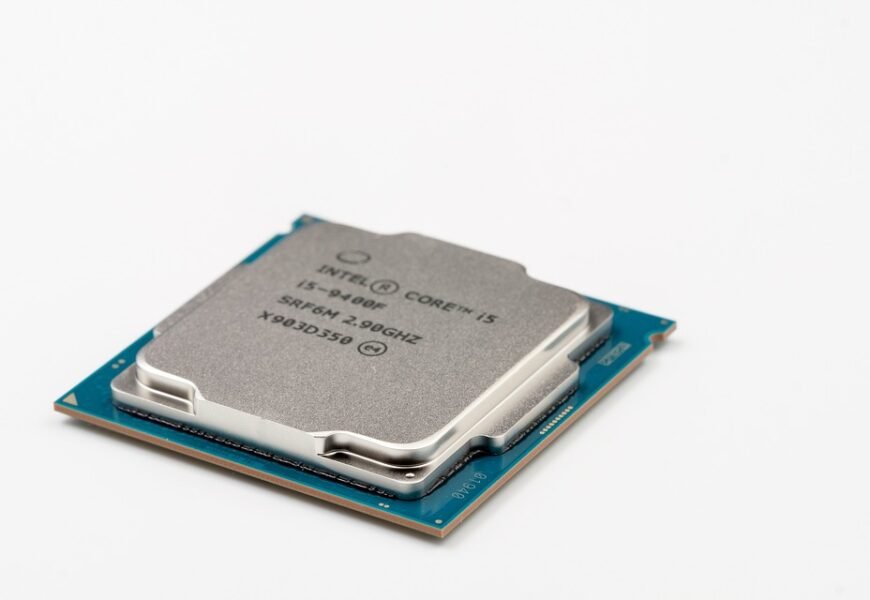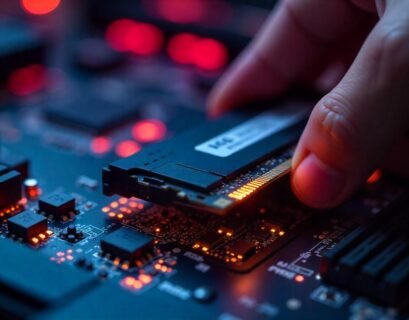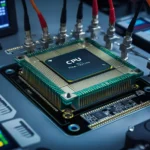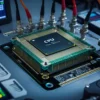The central processing unit (CPU) stands at the heart of computing, serving as the brain behind the operations of laptops, desktops, servers, and even smartphones. Despite its common presence in our digital lives, the architecture and functionality of CPUs are often shrouded in complexity. This article seeks to demystify CPU architecture, explore the latest technical innovations, provide insights from industry experts, and examine the future outlook of processors.
1. The Basics of CPU Architecture
1.1 What is CPU Architecture?
CPU architecture refers to the design and organization of a computer’s central processing unit. This includes the instruction set architecture (ISA), data paths, control units, registers, and other components that dictate how the CPU processes information. Architecture is often categorized into two main types:
- CISC (Complex Instruction Set Computer): This design allows for multiple cycles of computation per instruction, making certain tasks simpler but potentially less efficient.
- RISC (Reduced Instruction Set Computer): RISC architectures streamline the instruction set, allowing for faster execution of simpler instructions.
1.2 Key Components of CPU Architecture
Understanding CPU architecture requires an awareness of its key components:
- Arithmetic Logic Unit (ALU): Responsible for performing arithmetic and logical operations.
- Control Unit (CU): Directs the operation of the processor and coordinates how data moves between various components.
- Registers: Tiny storage locations within the CPU that hold data temporarily during operation.
- Cache Memory: A small-sized type of volatile computer memory that provides high-speed data access to the processor and stores frequently used programs and data.
2. The Evolution of CPUs
2.1 Historical Context
The history of CPU architecture can be traced back to the early 1970s with processors like the Intel 4004. This era laid the groundwork for the personal computing revolution. From the early microprocessors to the complex multi-core designs of today, the evolution has been characterized by a consistent drive towards higher performance, energy efficiency, and integration.
2.2 Timeline of Innovations
- 1978: Introduction of the Intel 8086, which laid the foundation for the x86 architecture.
- 1985: The introduction of the RISC architecture by companies like MIPS and ARM helped in executing instructions more efficiently.
- 2000s: Multi-core processors emerged, enabling multiple simultaneous tasks, greatly enhancing performance in both personal computing and enterprise scenarios.
- 2010s: The development of specialized processing units like GPUs (Graphics Processing Units) and TPUs (Tensor Processing Units) for specific workloads (particularly in graphics processing and AI).
3. Recent Technical Innovations
3.1 Process Technology Advances
Recent innovations in CPU technology have centered around shrinking manufacturing processes. Current processors are often manufactured using 5 nm technology or smaller, which allows for more transistors to fit onto a single chip and hence higher performance while reducing power consumption.
3.2 Integrated Graphics and AI Capabilities
Modern CPUs combine traditional processing capabilities with advanced graphical and AI computation. For example, AMD and Intel now embed powerful GPUs within their CPUs, enabling tasks that previously required separate processors.
3.3 Security Features
As security becomes a more critical concern, CPUs are now being designed with integrated security features, such as Intel’s SGX and AMD’s SEV. These technologies create secure enclaves for protecting sensitive data, thus enhancing the overall security posture of devices.
4. Industry Insights
4.1 Market Dynamics
The global CPU market is witnessing strong growth driven by trends such as increased demand for cloud computing, artificial intelligence, and the Internet of Things (IoT). Market research predicts sustained growth, with some estimates projecting compound annual growth rates (CAGR) of over 5% through the next decade.
4.2 Competitive Landscape
The major players in the CPU market include:
- Intel: Historically dominant, Intel continues to innovate with its Core, Xeon, and upcoming Alder Lake architectures.
- AMD: With its Ryzen and EPYC series, AMD has gained considerable market share through competitive pricing and performance.
- ARM: Dominating the mobile and embedded system markets, ARM processors are increasingly finding their way into high-performance areas, thanks to their energy-efficient designs.
4.3 The Role of Open Source
Open-source initiatives like RISC-V are gaining traction. The RISC-V ISA is flexible and extensible, enabling companies to customize their processors for specific use cases. This innovation reflects a strategic shift towards a less proprietary landscape, fostering innovation and competition in the industry.
5. The Future Outlook
As we look forward, the CPU landscape is expected to evolve significantly due to several factors:
5.1 Integration with AI
The integration of AI capabilities within CPUs will only become more pronounced. Processors designed specifically for AI workloads will enable innovative applications across sectors, including personalized healthcare, smart manufacturing, and autonomous vehicles.
5.2 Quantum Computing
Quantum computing poses a paradigm shift for processing. Though still in its infancy, quantum processors promise to far exceed the capabilities of classical processors for certain computational tasks. Industries are investing in research and development to unlock the potential of quantum architectures.
5.3 Sustainability
Sustainability has become a pivotal focus in technology. Future CPUs will increasingly prioritize energy efficiency and sustainability throughout their lifecycle—from design and manufacturing to operational performance and recycling.
5.4 Continued Miniaturization
The trend of miniaturization is not likely to end soon. As process technology advances beyond 3 nm, manufacturers will face new challenges, such as quantum tunneling, which might push CPU design into new territories, including the exploration of three-dimensional architectures.
6. Conclusion
Understanding CPU architecture and its evolution is critical for both industry professionals and tech enthusiasts. From the simple microprocessors of the past to the sophisticated multi-core designs of today, CPU architecture has witnessed remarkable advancements. Innovations in areas like integrated graphics, AI capabilities, and security features are reshaping computing as we know it.
As the industry evolves, the future presents exciting possibilities intertwined with challenges. The advent of quantum computing, the pursuit of energy efficiency, and the rise of open-source architectures signal a transformative era ahead. The core components of CPU architecture will continue to adapt, driving the next wave of technological advancement.
Incorporating insights from leading experts and current market trends, it is evident that the CPU will remain a pivotal component of computing technologies. By keeping an eye on the innovations and directions of CPU architecture, we can better understand the underlying mechanisms that make processors tick. The journey ahead is filled with potential, ensuring that the humble CPU will continue to play a crucial role in shaping the future of technology.


















